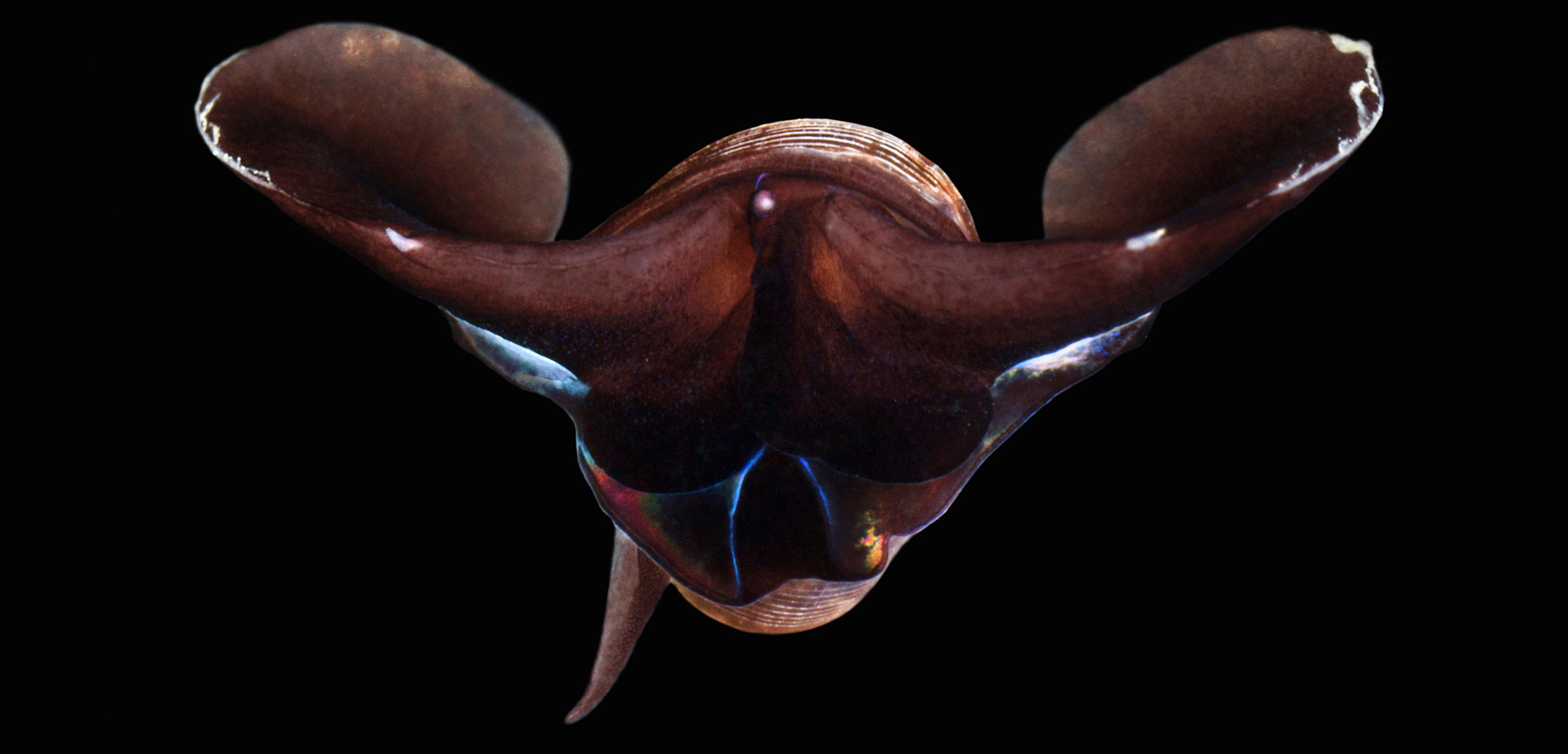Changes to the Ocean’s Micro Creatures Could Have Macro Effects
The effects of climate change reverberate through the ocean’s food webs.
Article body copy
Limacina helicina is one of the most flamboyant animals in the North Pacific. The tiny mollusk caps out at the size of a grain of quinoa and has a coiled shell with two fins resembling translucent Dumbo ears. This sea butterfly feeds by casting a huge net of mucus to scoop up prey.
Unfortunately, like many marine creatures, L. helicina is threatened by climate change—specifically by ocean acidification, because corrosive waters prevent newly hatched larvae from forming their shells properly, handicapping them for life. For years, scientists have been calling sea butterflies the canaries in the coal mine of ocean acidification, and the effects on these bellwethers may be even more complex than they thought.
New research shows these little animals breed twice a year, once in the spring and once in the fall, which means they’re particularly vulnerable to acidic conditions twice a year instead of just once. But they’re not alone in their plight in a changing ocean.
Countless zooplankton species around the world—from amphipods and gastropods to crustaceans—are feeling the sting of climate change, and that’s a problem for ecosystems. Zooplankton are “the cows of the ocean,” says University of British Columbia oceanographer Brian Hunt. They gobble up the ocean’s primary producers—phytoplankton—and fuel the lives of large animals such as birds and fish. Despite their size, disrupting the lives of tiny zooplankton will send outsized waves through ocean food webs.
In the North Sea, for example, the birth of juvenile Calanus finmarchicus, a type of copepod, happens in the spring to coincide with a phytoplankton bloom. Juvenile cod also hatch in the spring and gorge on the huge numbers of zooplankton, including C. finmarchicus.
But C. finmarchicus is adapted to cold water. As the North Sea has warmed by more than 1.5 °C over the past four decades, the copepod’s range has shifted north and its local numbers have dropped by 60 percent. Another copepod, C. helgolandicus, has moved in to fill the void. But C. helgolandicus breeds in the fall, leaving the juvenile cod stripped of their springtime smorgasbord.
“The timing is off,” says Richard Kirby, an independent plankton scientist in the United Kingdom who said that the result is “a mismatch in the food chain.”
In a recent paper, Kirby suggests that the change in zooplankton has played a significant role in the continued failure of North Atlantic cod stocks. And in British Columbia, Hunt’s work suggests that the effects of acidification on L. helicina will carry over to its predators, including iconic animals such as salmon and herring.
Along with mismatched timing and acidification, the loss of sea ice—another casualty of climate change—affects zooplankton, too. In the waters around Antarctica, krill dominate. They are so numerous that by some estimates they are the most abundant animal species in the world. Creatures from seabirds to blue whales rely on krill for food. But juvenile krill hide from predators on the underside of sea ice, and that ice cover is shrinking, so the krill are retreating along with it. Now a species of salp, Salpa thompsoni, a gelatinous creature about the size of a computer mouse, is moving into krill’s niche in massive, voracious swarms.
“They’re basically working as vacuum cleaners in the ocean,” says Morten Iverson, an ecologist at the Alfred Wegener Institute in Germany. “They’re feeding on everything they can get in through their mouth.”
The impact of salps on the ecosystem is still uncertain. They aren’t as nutritious as krill, and instead of storing nutrition as fat, they simply poop everything out, depositing the nutrients in their fecal pellets. Iverson’s recent study, slyly titled “Sinkers or floaters?” showed that salp poop seems to degrade in the upper reaches of the ocean, dumping some nutrients back into the water. But how seals, whales, and birds will actually get this nutrition remains unclear.
Hunt says that studying how zooplankton react to climate change is particularly important because they carry so much of the marine food web on their tiny shoulders. “Without them, we break the food chain,” he says. “There’s no way to transfer the energy from phytoplankton to the fish, and all the other animals we’re familiar with, without zooplankton.”

